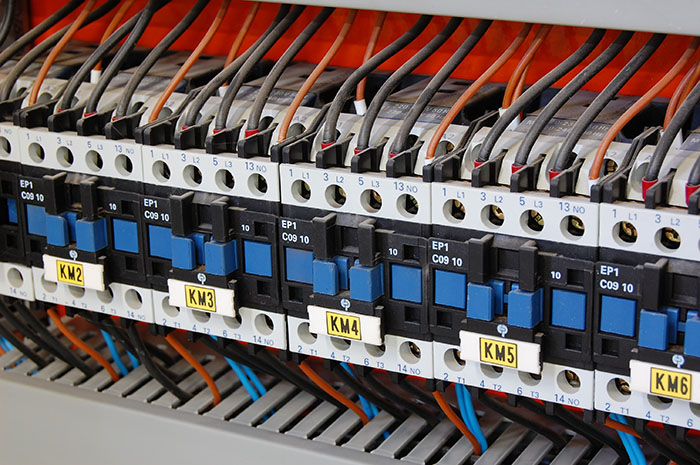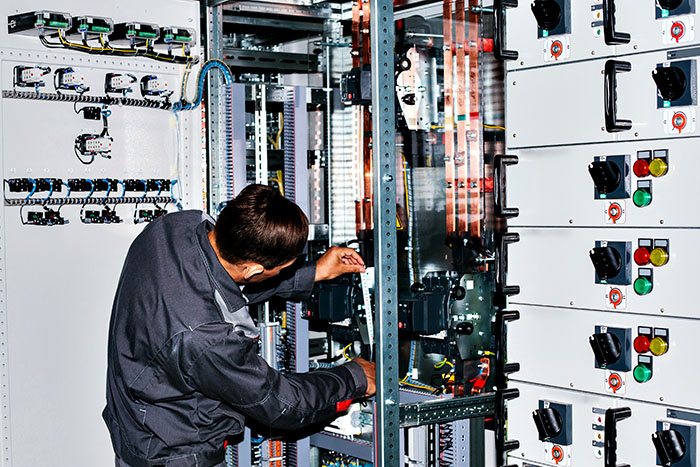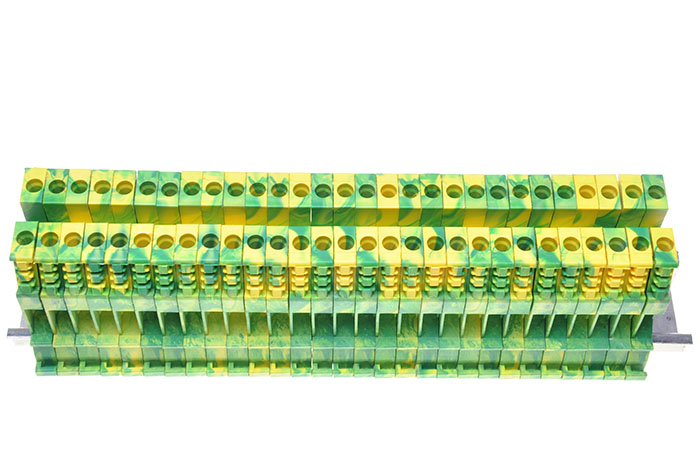You have probably heard of a circuit breaker before, but you might be wondering what a GFCI (ground fault current interrupter) circuit breaker is. A GFCI is a device that protects against electric shock. Let’s say that you have accidentally come into contact with a live current and you start to experience the shock. The GFCI will detect this and shut down the power within a fraction of a second before any serious injury takes place.
A GFCI circuit breaker can replace a typical circuit breaker and, thus, provide protection to every receptacle on an individual circuit. Fortunately, the instructions for installing a GFCI breaker are not too different from installing a normal circuit breaker:

1) Remove the panel cover from the electric panel box with an insulated flathead screwdriver.
Before we begin the installation, we want to make sure that we have complete access to the interior of the electric panel box. Unscrewing the cover allows us to do our work without the cover getting in the way.
2) Turn off the main breaker.
This will ensure that everything connected to the panel loses power. Following this, you will also want to set all of the individual circuits to “OFF.” Note that the panel is still “live,” so avoid making any contact with the bus bar. Anything before the main breaker is still “hot”!
If you find that you have trouble seeing the electric panel after turning the main breaker off, you might want to have a lamp beside you for extra visibility.
3) Remove the breaker that is going to be uninstalled.
You can also unscrew the black wire connected to it. Turning off the power in step 2 allows for this step to be done safely.
4) Attach the GFCI breaker to the neutral bus of the electrical panel.
The GFCI breaker has a white pigtail-shaped wire that connects to it. This needs to be connected to the neutral bus bar of the electrical panel using the white wires that are connected to the panel. Once this is done, tighten the screw to ensure a solid connection. Your neutral connections have now been made.

5) Connect the GFCI breaker to the hot wire.
Strip the black (or red) wire of its insulation by 0.5-1.0 inches, connect it to the “load” terminal of the GFCI breaker, and tighten the connection. This is your hot wire connection.
6) Test your main breaker.
Now that the installation is complete, you can insert the GFCI breaker into the open slot and press it onto the bus bar. At this point, you can restore power by turning the main breaker back on, followed by switching all of the other individual circuit breakers to “on.”
Last, turn on power to the installed GFCI breaker and ensure that it holds. If it does, you can press the test button. The installation is successful if the breaker handle clicks and moves to the center tripped position. This means that a ground fault has taken place.
7) Replace the cover.
Now that the installation is complete, make sure to tightly secure the cover of the electrical panel box back on.

Those are the basic steps that you need to be aware of when installing a GFCI breaker. Some breakers will come with a label that helps you keep track of the dates when the circuits need to be tested, which is usually on a monthly basis. If you are unsure of your ability to complete these steps, consult a professional electrician to do the job for you and get your electrical supplies from a reputable company.
